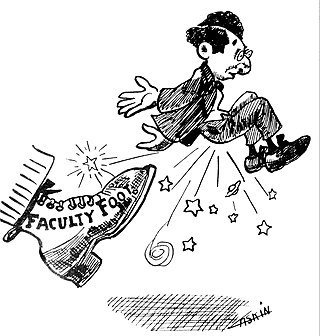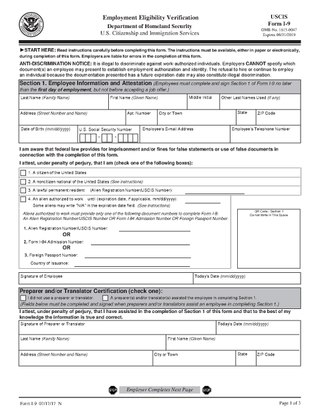Human resources (HR) is the set of people who make up the workforce of an organization, business sector, industry, or economy. A narrower concept is human capital, the knowledge and skills which the individuals command. Similar terms include manpower, labor, or personnel.

Software architecture is the set of structures needed to reason about a software system and the discipline of creating such structures and systems. Each structure comprises software elements, relations among them, and properties of both elements and relations.
Employment is a relationship between two parties regulating the provision of paid labour services. Usually based on a contract, one party, the employer, which might be a corporation, a not-for-profit organization, a co-operative, or any other entity, pays the other, the employee, in return for carrying out assigned work. Employees work in return for wages, which can be paid on the basis of an hourly rate, by piecework or an annual salary, depending on the type of work an employee does, the prevailing conditions of the sector and the bargaining power between the parties. Employees in some sectors may receive gratuities, bonus payments or stock options. In some types of employment, employees may receive benefits in addition to payment. Benefits may include health insurance, housing, disability insurance. Employment is typically governed by employment laws, organisation or legal contracts.
A layoff or downsizing is the temporary suspension or permanent termination of employment of an employee or, more commonly, a group of employees for business reasons, such as personnel management or downsizing an organization. Originally, layoff referred exclusively to a temporary interruption in work, or employment but this has evolved to a permanent elimination of a position in both British and US English, requiring the addition of "temporary" to specify the original meaning of the word. A layoff is not to be confused with wrongful termination. Laid off workers or displaced workers are workers who have lost or left their jobs because their employer has closed or moved, there was insufficient work for them to do, or their position or shift was abolished. Downsizing in a company is defined to involve the reduction of employees in a workforce. Downsizing in companies became a popular practice in the 1980s and early 1990s as it was seen as a way to deliver better shareholder value as it helps to reduce the costs of employers. Research on downsizing in the US, UK, and Japan suggests that downsizing is being regarded by management as one of the preferred routes to help declining organizations, cutting unnecessary costs, and improve organizational performance. Usually a layoff occurs as a cost-cutting measure. A study of 391 downsizing announcements of the S&P 100 firms for the period 1990-2006 found, that layoff announcements resulted in substantial increase in the companies’ stock prices, and that the gain was larger, when the company had prior layoffs. The authors suggested, that the stock price manipulation alone creates a sufficient motivation for publicly-traded corporations to adopt the practice of regular layoffs.

In systems engineering, information systems and software engineering, the systems development life cycle (SDLC), also referred to as the application development life cycle, is a process for planning, creating, testing, and deploying an information system. The SDLC concept applies to a range of hardware and software configurations, as a system can be composed of hardware only, software only, or a combination of both. There are usually six stages in this cycle: requirement analysis, design, development and testing, implementation, documentation, and evaluation.

Termination of employment or separation of employment is an employee's departure from a job and the end of an employee's duration with an employer. Termination may be voluntary on the employee's part (resignation), or it may be at the hands of the employer, often in the form of dismissal (firing) or a layoff. Dismissal or firing is usually thought to be the employee's fault, whereas a layoff is generally done for business reasons outside the employee's performance.
Staffing is the process of finding the right worker with appropriate qualifications or experience and recruiting them to fill a job position or role. Through this process, organizations acquire, deploy, and retain a workforce of sufficient quantity and quality to create positive impacts on the organization's effectiveness. In management, staffing is an operation of recruiting the employees by evaluating their skills and knowledge before offering them specific job roles accordingly.

Dismissal is the termination of employment by an employer against the will of the employee. Though such a decision can be made by an employer for a variety of reasons, ranging from an economic downturn to performance-related problems on the part of the employee, being fired has a strong stigma in some cultures.

Recruitment is the overall process of identifying, sourcing, screening, shortlisting, and interviewing candidates for jobs within an organization. Recruitment also is the process involved in choosing people for unpaid roles. Managers, human resource generalists, and recruitment specialists may be tasked with carrying out recruitment, but in some cases, public-sector employment, commercial recruitment agencies, or specialist search consultancies such as Executive search in the case of more senior roles, are used to undertake parts of the process. Internet-based recruitment is now widespread, including the use of artificial intelligence (AI).
Within quality management systems (QMS) and information technology (IT) systems, change control is a process—either formal or informal—used to ensure that changes to a product or system are introduced in a controlled and coordinated manner. It reduces the possibility that unnecessary changes will be introduced to a system without forethought, introducing faults into the system or undoing changes made by other users of software. The goals of a change control procedure usually include minimal disruption to services, reduction in back-out activities, and cost-effective utilization of resources involved in implementing change. According to the Project Management Institute, change control is a "process whereby modifications to documents, deliverables, or baselines associated with the project are identified, documented, approved, or rejected."
In human resource development, induction training introduces new employees to their new profession or job role, within an organisation. As a form of systematic training, induction training familiarises and assists new employees with their employer, workforce and job design. The scale of induction training varies between organisations, with smaller firms typically conducting induction in the early months of employment, in comparison to larger corporations who dedicate greater time and resources to its completion.
An employee handbook, sometimes also known as an employee manual, staff handbook, or company policy manual, is a book given to employees by an employer.
The project initiation documentation (PID) is one of the most significant artifacts in project management, which provides the foundation for the business project.
An induction programme is the process used within many businesses to welcome new employees to the company and prepare them for their new role. It helps in the integration of employees into the organization.
A severance package is pay and benefits that employees may be entitled to receive when they leave employment at a company unwillfully. In addition to their remaining regular pay, it may include some of the following:
In human resources, turnover is the act of replacing an employee with a new employee. Partings between organizations and employees may consist of termination, retirement, death, interagency transfers, and resignations. An organization’s turnover is measured as a percentage rate, which is referred to as its turnover rate. Turnover rate is the percentage of employees in a workforce that leave during a certain period of time. Organizations and industries as a whole measure their turnover rate during a fiscal or calendar year.

Form I-9, officially the Employment Eligibility Verification, is a United States Citizenship and Immigration Services form. Mandated by the Immigration Reform and Control Act of 1986, it is used to verify the identity and legal authorization to work of all paid employees in the United States. All U.S. employers must ensure proper completion of Form I-9 for each individual they hire for employment in the United States.

An application for employment is a standard business document that is prepared with questions deemed relevant by employers. It is used to determine the best candidate to fill a specific role within the company. Most companies provide such forms to anyone upon request, at which point it becomes the responsibility of the applicant to complete the form and return it to the employer for consideration. The completed and returned document notifies the company of the applicant's availability and desire to be employed as well as their qualifications and background so that a determination can be made as to the candidate's suitability to the position.
Employee retention is the ability of an organization to retain its employees and ensure sustainability. Employee retention can be represented by a simple statistic. Employee retention is also the strategies employers use to try to retain the employees in their workforce.
Labour law regulates the legal relationship in Bulgaria between individual workers and employees as well as between coalitions and representative bodies.





